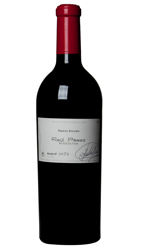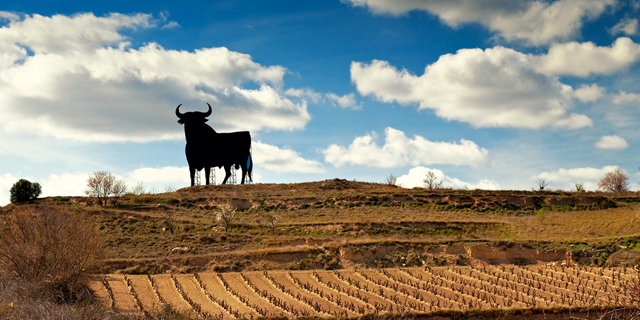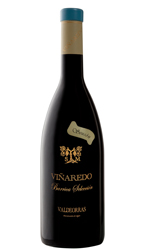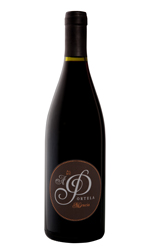Hondarrabi Beltza is blessed with dark good looks, a racy character, and Basque heritage and she leaves her lovers in a rose-scented stupor. Before you start sketching a Bond Girl prototype though, you may want to know this: Hondarrabi Beltza is a wine grape from Spain’s Basque region, one that you probably haven’t heard of before.
For decades, Spain has been hailed for Tempranillo, Garnacha, and Albariño. But a new generation of Spanish winemakers is breaking ground with lesser-known regional grapes, some rescued from near extinction. Fortunately for American wine lovers, rare Spanish varietals are appearing on wine lists at trendy restaurants and on the shelves of boutique wine shops.
All you need to enjoy these wines is a thirst for the unique. You won’t need a fat wallet, as Spain continues to produce quality wines at fair prices. On a recent day at Los Angeles wine retailer The Wine House, exotic Spanish wines could be found for as little as $17 to as much as $60. Madrid transplant Monica Marin, who heads up the Wine & Spirit Education Trust (WSET) studies program at The Wine House, noted that the store’s clients “travel more, and they want to be exposed to different things.”
The definition of “different” varies according to the consumer, says Kerin Auth, managing partner of Peninsula Wines, a New Rochelle, New York-based importer of Spanish wines. “There’s obscure, and there’s obscure obscure,” said Auth. The average consumer may consider Mencía, a red Spanish varietal once thought to be related to Cabernet Franc, a rare grape. But, Auth noted, “Mencía is on the cusp,” as more intrepid wine drinkers are already familiar with it.

Prieto Picudo
This red grape from Spain’s León region is known for its acidity and tannins. Spanish winemaker Raul Pérez is credited with the grape’s sudden rise in popularity; his namesake Raul Pérez Prieto Picudo 2009 (left) scored an impressive 94 points from Robert Parker. You’ll savor ripe blackberry and boysenberry notes with an earthy minerality.
Listán Blanco
Better known as Palomino—the primary grape used in Sherry—Listán Blanco is not rare per se, however non-fortified wines made with it are uncommon. For those who like their rare varietals in one bottle, Suertes del Marqués Vidonia 2011 from Tenerife is a blend of 90 percent Listán Blanco with obscure grapes grown only in the Canary Islands: Guai, Marmajuelo and Vijariego. The wine displays a distinctly salty taste, along with rich minerality from the volcanic soil and marzipan aromas from oak aging.
Next, four more wines to hunt for…
[pagebreak]
Sousón
Nearly eradicated by the root louse phylloxera, this red grape grows in northwest Spain along the border with Portugal, where it is used primarily in Port blends. A typical 100 percent Sousón wine shows lavender, mint and black cherry characteristics. Adegas Santa Marta Viñadero Barrica Selección 2010 (left) is made in part with Sousón grapes from vines more than a century old, along with younger vines.
Godello
Some consider Godello the best white wine grape in the Valdeorras region, thanks to its lush apricot notes and satiny texture. Although the dominant grape in Bodega Eduardo Peña’s María Andrea 2011 blend is Treixadura, Godello gives it beautiful fruit, white floral notes and silkiness on the palate. This un-oaked wine is a refreshing alternative to Chardonnay or Pinot Grigio.
Mencía
Familiar to some but brand-new to others, Mencía is gaining a following among U.S. consumers. Worth noting is the A Portela 2011 (right), made with 100 percent Mencía grapes. Completely un-oaked with plum and cherry notes, you’ll get hints of limestone with lingering violet candy aromas.
Hondarrabi Beltza
Native to the Basque region, this red grape produces a slightly fizzy, fruity wine with delicate strawberry and rose notes. Try Ameztoi Getariako Txakolina Stimatum 2012 and savor the crisp acidity, then raise a toast to Spain’s emerging crop of unique vinos.




![Making Mealtime Matter with La Familia: Easy Sofrito [Video]](https://thelatinkitchen.com/wp-content/uploads/2015/10/sofrito-shutterstock__0-500x383.jpg)
![Easy Latin Smoothies: Goji Berry Smoothie [Video]](https://thelatinkitchen.com/wp-content/uploads/2015/12/goji_berry-shutterstock_-500x383.jpg)
















![Fun and Fast Recipes: Fiesta Cabbage Salad [Video]](https://thelatinkitchen.com/wp-content/uploads/2015/11/fiesta_cabbage_slaw-shutterstock_-500x383.jpg)









